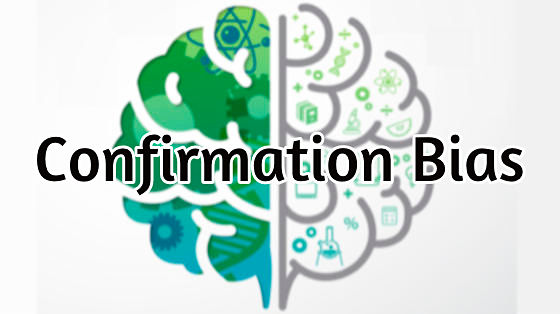
Beware the “Special Case”: Confirmation Bias (Part 1)
Gil wants to lose weight. He selects a particular diet and checks his progress on the scale every morning. If he has lost weight, he pats himself on the back and considers the diet a success. If he has gained weight, he writes it off as a normal fluctuation and forgets about it. For months, he lives under the illusion that the diet is working, even though his weight remains constant. Gil is a victim of the confirmation bias—albeit a harmless form of it.
The confirmation bias is the mother of all misconceptions. It is the tendency to interpret new information so that it becomes compatible with our existing theories, beliefs, and convictions. In other words, we filter out any new information that contradicts our existing views (“disconfirming evidence”). This is a dangerous practice. “Facts do not cease to exist because they are ignored,” said writer Aldous Huxley. However, we do exactly that, as super-investor Warren Buffett knows: “What the human being is best at doing is interpreting all new information so that their prior conclusions remain intact.”
The confirmation bias is alive and well in the business world. One example: An executive team decides on a new strategy. The team enthusiastically celebrates any sign that the strategy is a success. Everywhere the executives look, they see plenty of confirming evidence, while indications to the contrary remain unseen or are quickly dismissed as “exceptions” or “special cases.” They have become blind to disconfirming evidence.
What can you do? If the word “exception” crops up, prick up your ears. Often it hides the presence of disconfirming evidence. It pays to listen to Charles Darwin: Since his youth, he set out to fight the confirmation bias systematically. Whenever observations contradicted his theory, he took them very seriously and noted them down immediately. He knew that the brain actively “forgets” disconfirming evidence after a short time. The more correct he judged his theory to be, the more actively he looked for contradictions.
The following experiment shows how much effort it takes to question your own theory. A professor presented his students with the number sequence 2-4-6. They had to calculate the underlying rule that the professor had written on the back of a sheet of paper. The students had to provide the next number in the sequence to which the professor would reply “fits the rule” or “does not fit the rule.” The students could guess as many numbers as they wanted but could try only once to identify the rule. Most students suggested 8 as the next number, and the professor replied: “Fits the rule.” To be sure, they tried 10, 12, and 14. The professor replied each time: “Fits the rule.” The students concluded: “The rule is to add two to the last number.” The professor shook his head: “That is not the rule.”
One shrewd student tried a different approach. He tested out the number -2. The professor said: “Does not fit the rule.” “Seven?” he asked. “Fits the rule.” The student tried all sorts of numbers: -24, 9, -43. Apparently he had an idea, and he was trying to find a flaw with it. Only when he could no longer find a counterexample, the student said: “The rule is this: The next number must be higher than the previous one.” The professor turned over the sheet of paper, revealing those very words. What distinguished the resourceful student from the others? While the majority of students sought merely to confirm their theories, he tried to find fault with his, consciously looking for disconfirming evidence. You might think: “Good for him, but not the end of the world for the others.” However, falling for the confirmation bias is not a petty intellectual offense. How it affects our lives will be revealed in the next chapter.
* Source: The Art of Thinking Clearly by Rolf Dobelli
